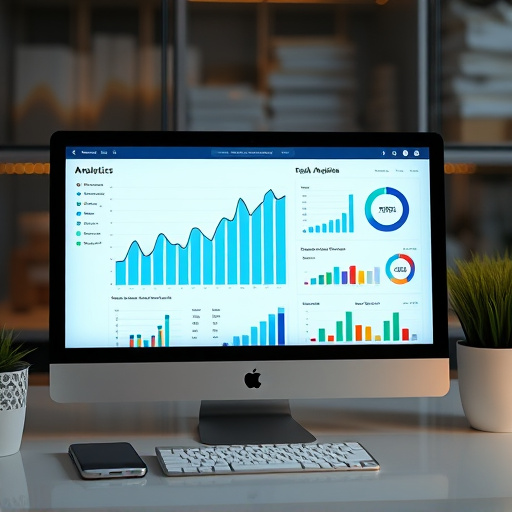Web design services in Arlington focus on optimizing slow-loading elements like large images and scripts to enhance user engagement. Techniques include resizing, compression, using modern image formats (like WebP), and minimizing scripts for efficient loading. Image compression and reducing HTTP requests through file combining and caching significantly speed up load times, benefiting custom website designs. Browser caching further enhances user experience and site performance, especially crucial for local businesses aiming to boost online marketing efforts.
Enhancing your website’s loading speed is vital for capturing and retaining user interest. In today’s fast-paced digital landscape, quick load times are key to fostering engagement and driving conversions. This article guides you through effective strategies, such as identifying slow-loading elements, optimizing images, reducing HTTP requests, and leveraging browser caching. By implementing these web design services, you’ll not only improve performance but also elevate the overall user experience for your visitors.
- Identify Slow-Loading Elements: Images, Scripts, and More
- Optimize Images and Reduce HTTP Requests for Faster Loading
- Leverage Browser Caching to Improve User Experience
Identify Slow-Loading Elements: Images, Scripts, and More

Identifying slow-loading elements is a crucial step in enhancing your website’s performance and user experience. Web design services often focus on optimizing various components to ensure your site loads swiftly, keeping visitors engaged. When it comes to culprits behind slow loading times, images, scripts, and other media often top the list.
Large or poorly compressed images can significantly delay page load times, impacting user engagement. Professional web design in Arlington pays close attention to image optimization techniques like resizing, compression, and using modern formats (e.g., WebP) to reduce file sizes without compromising visual quality. Additionally, scripts, especially those added for functionality or analytics, should be carefully reviewed. Many web design services employ tools to analyze and minimize these elements, ensuring they load efficiently without slowing down the overall website performance.
Optimize Images and Reduce HTTP Requests for Faster Loading

Optimizing images is a powerful strategy in the arsenal of any web design services provider. By compressing and resizing images to the exact dimensions required by the page, without sacrificing quality, you can significantly reduce file sizes. This simple yet effective technique ensures that your website displays visuals swiftly, enhancing user experience and boosting engagement metrics.
Additionally, reducing HTTP requests is a game-changer for web design in Fort Worth or Arlington. Each time your website loads a resource, it makes an HTTP request. Minimizing these requests by combining files, using browser caching, and prioritizing loading critical resources first can dramatically speed up load times. This is especially crucial for custom website designs where every detail matters to create a memorable user experience.
Leverage Browser Caching to Improve User Experience

Leveraging browser caching is a powerful strategy that web design services can employ to significantly enhance user experience and website performance. When users visit a website for the first time, every element needs to be downloaded from the server, which can slow down loading times. However, with browser caching, frequently accessed resources like images, scripts, and stylesheets are stored locally on the user’s device. On subsequent visits, these files can be quickly retrieved from the cache, reducing load times considerably. This is especially beneficial for local businesses looking to boost their online marketing efforts by delivering faster web experiences that keep customers engaged.
For optimal results, web design agencies in South Florida should consider setting appropriate cache expiration times for various file types. Static assets like CSS and JavaScript can be cached for longer durations, while dynamic content might have shorter cache times. Implementing these caching strategies ensures that your website design agency not only improves the speed of their clients’ websites but also enhances the overall user journey for local businesses operating in competitive online markets.
Enhancing website loading speed is a powerful strategy for boosting user engagement. By identifying and optimizing slow-loading elements, such as images and scripts, web designers can significantly reduce load times. Implementing browser caching further improves performance by storing resources locally, ensuring faster access on subsequent visits. With these simple yet effective techniques, web design services can create dynamic and responsive online experiences that keep visitors engaged and coming back for more.














